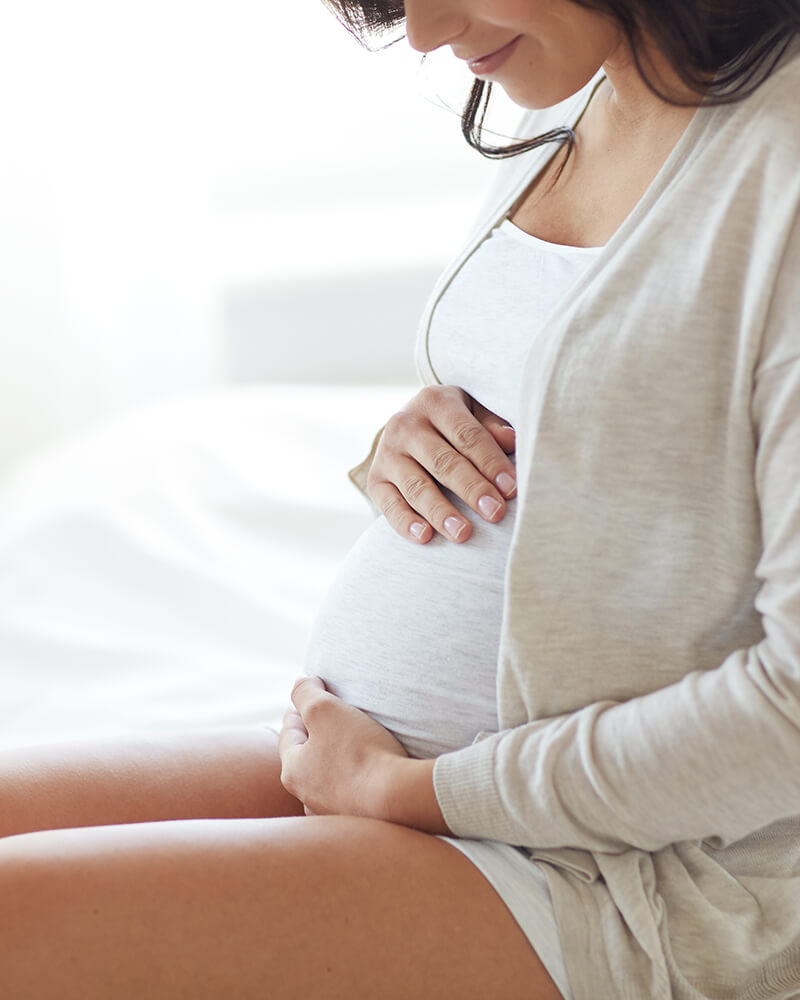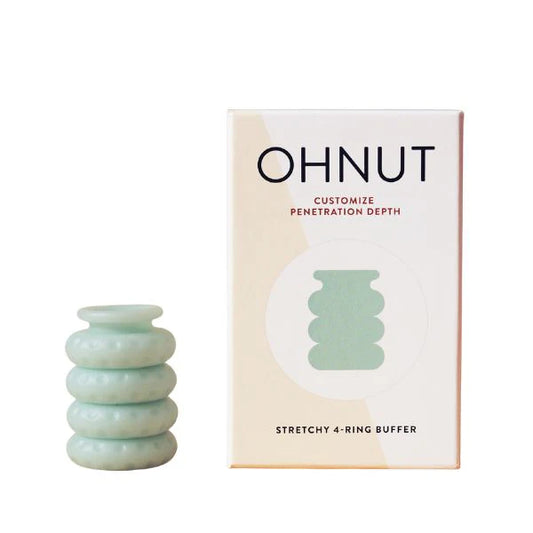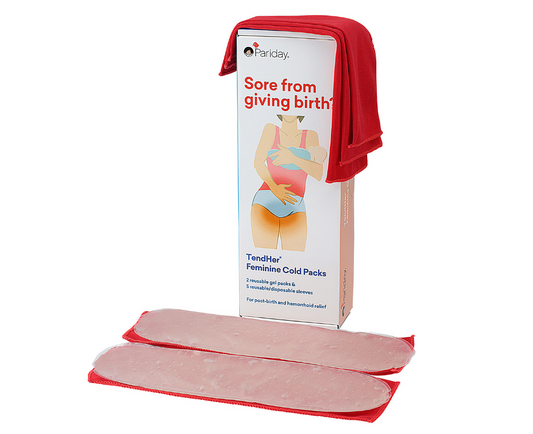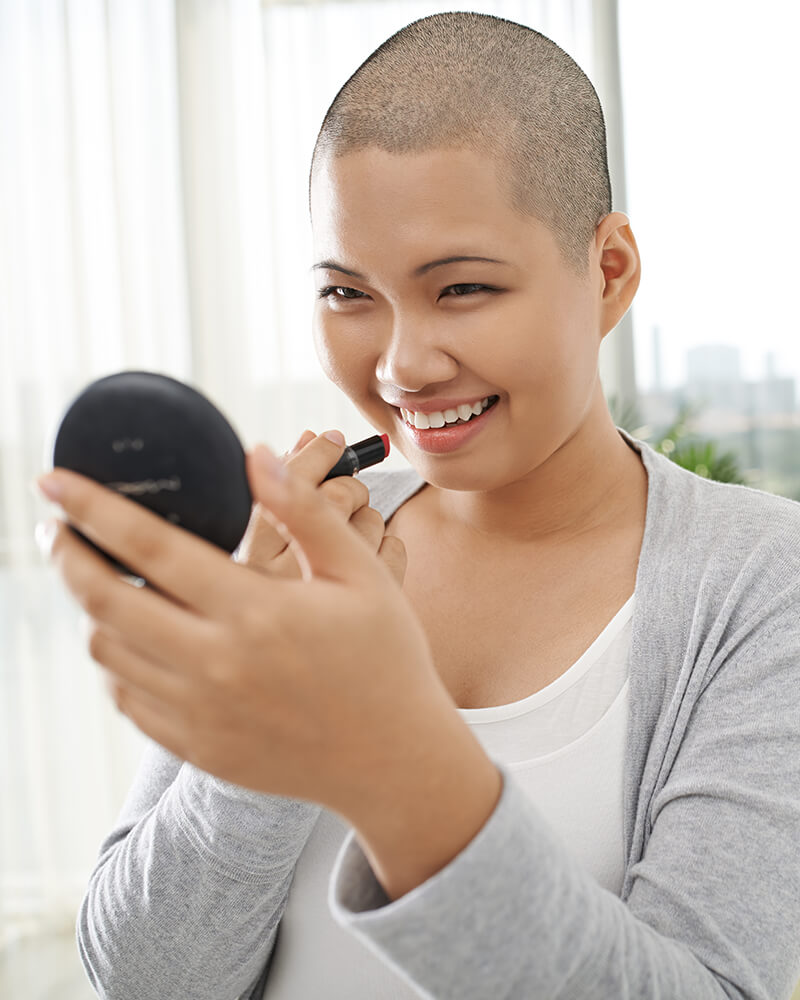
Pre and postnatal
Taking care of your baby starts with taking care of yourself
Congratulations, you’re pregnant! Or maybe you recently brought home a brand new cutie! You’re a rocking woman enjoying life as a new Mama, well, mostly. As you will soon find out (or may already know), pregnancy can bring with it some not-so-nice changes to your body such as swollen ankles, heartburn, constipation and morning sickness.
And there are also some wonderful parts, such as the glowing skin, thicker hair, a growing belly and the feeling of the baby kicking inside you. Not to mention the fact that you’re literally growing a person! But don’t forget to be mindful of the huge transformation happening to your pelvis.
Written by Emma McGeorge
Related Conditions
Want to learn more about related conditions? Follow the links below to gain a better understanding of the symptoms and treatments.
Your pelvis during pregnancy and childbirth
In case you didn’t know, your pelvis actually plays a central role in almost every aspect of how your body moves and functions. Including basic stuff like using the bathroom, enjoying sex, keeping your balance and moving about. It really is your body’s all important central core.
And being pregnant puts a lot of pressure on your pelvis. Think about it, your pelvis bears the full weight of your baby (and placenta!), and all that extra weight changes the loads placed on your body. Plus your pelvis is also affected by the hormone relaxin, which softens your muscles and ligaments so they can stretch to make room for the growing baby.
But it doesn’t stop there. After nine (well, really it’s ten) long months of being stretched and sat on, your pelvis is then responsible for bringing your baby into the world.
The good news is, our bodies are perfectly designed to achieve the truly amazing feat of carrying and birthing a baby.
The bad news is, all the change, pressure and strain that comes with pregnancy and childbirth can make your pelvis vulnerable to injury, which means it’s important to give it the care and support it needs along the way.
Common pre- and postnatal pelvic health issues
Maybe you’re one of those magical pregnancy unicorns that doesn’t experience any pre- or postnatal symptoms at all. Or, more likely that not, you’ll have a few annoying aches and pains, or you might experience one (or more) of these fairly common pre- and postnatal pelvic health issues:
- Pelvic organ prolapse (POP)
- Pain during sex or sexual dysfunction
- Diastasis recti (abdominal separation)
- Symphysis pubis dysfunction (SPD)
- Hemorrhoids
- Pelvic girdle or sacroiliac joint pain
- Pubic pain (pubic symphysitis) or pubic separation (diastasis)
- Hip or groin pain
- Pudendal nerve pain
- Vaginal or perineal pain (from episiotomy or tearing)
- Urinary issues like leaking, feeling the need to go more often or feeling like you can’t fully empty your bladder
- Loss of bowel control like increased urgency or streaking in the underwear)
- Bulging or pressure between your legs (perineum)
- Feeling weak in your abdominal muscles or noticing a bulge in the belly when sitting up
These symptoms and issues are common for those who have been pregnant or have a baby. However, they can be challenging and frustrating and aren’t just something you need to “grin and bear it” in regards to. With the right products, information and support they can be treated and your quality of life can improve.
Make your pelvic health a priority
.jpg)
We want you to start feeling good about your body, no matter what stage you are in. If you’re pregnant, that means keeping that pelvis in shape and making preparations for childbirth, and if you’ve had your baby that means restoring your body from the inside out.
Preparing your core and pelvis for childbirth can help you have a better birth experience and a quicker recovery once your baby is born. And taking care of your pelvic health after pregnancy is just as important. Whether your baby is delivered by c-section or vaginally, your pelvis has dealt with some serious stress and your body needs a little extra love to recover and repair.
Prepare for recovery after childbirth with products that have been specially made to help you take the best care of yourself.
Because getting equipped with the right tools before the baby comes means there’s one less thing to think about when you’re busy trying to work out nappies and breastfeeding.
And finally, even if you don’t have any pain and symptoms right now, we strongly recommend seeing a pelvic health specialist (like a women’s health physio or gynecologist) for an assessment, just to make sure things are working as they should. All women should be getting regular pelvic health check ups but it’s especially important both during, and after, the huge marathon of pregnancy and childbirth.
Prepare, recover and restore your core from pregnancy and childbirth
The pelvis has different needs through the different stages of pregnancy. During pregnancy you need to keep your pelvic floor strong and functional to support your pelvis. Then as childbirth approaches it is important to start to prepare your pelvis for labor. After childbirth the focus for your pelvic floor is recovery and repair.
If you’ve had a baby before you’ll know that your core doesn’t just bounce back after the baby is born. In fact, in the days immediately after childbirth it can feel like your tummy is a deflated balloon. And it takes a little time for your organs to shift back into place. Belly wrapping can help your body heal. The Ab Wrap supports recovery from the inside out with gentle compression when things are feeling a bit wobbly.
But belly wrapping alone is often not enough— doing the right exercises should also be part of your recovery. The Ab System has you covered with a Core Confidence Exercise program to help you work on your pelvic floor, alignment and breath to keep you more comfortable through your third trimester. These same exercises then help recover form and function postpartum. The Ab System also includes the Ab Tank and Ab Wrap that are designed to gently support and encourage healing and realignment of your pelvis and abdomen after childbirth.
Get your body (and your mind) truly ready for childbirth
The Prepare to Push program is an incredibly thorough online course that covers all the essential information to prepare for birth and optimize your recovery.
You’ll learn the exercises to start practicing now for a faster, smoother birth, how to position yourself in the first and second stages of labor (it's not what you expect!), the one exercise that will really get your abs back and how to prevent the dreaded Mummy Tummy (plus more). And because it’s 100% online you can do it at home, completely at your own pace.
Treat aching, throbbing or dull pain in your pelvis and abdomen
The EndoFEMM® Pad is designed to wrap your aching pelvis with a cozy hug and can be used either chilled or warm to ease pelvic and abdominal pain or overall body aches and pains. And you can reverse it to ease shoulder, lower back and sacroiliac joint pain too!
Be prepared with essential first aid for your vagina after childbirth
Throw away the frozen condoms and sanitary pads. TendHer reusable perineal cooling pads are perfect for cooling the most sensitive and delicate area of a woman’s body. Comfortable, cooling and discreet spray them with witch hazel for extra relief and wear them with a pad to get that all important absorption. They really are perfect for recovering from childbirth and are versatile for later on to soothe tired eyes or treat toddler boo-boos.
Soothe sore nipples, engorged breasts, blocked ducts and mastitis
No more cabbage leaves or bags of frozen peas, TendHer reusable soothers are super soft, smooth, comfy and relieving and can be worn discreetly in your bra. Even when everything goes well, breastfeeding ain’t easy. These soothers can be used chilled, warm or room temperature. They are the perfect size covering both the breast and nipple (without being too big or bulky) so they’re great for treating sore nipples, engorgement, blocked ducts and mastitis. They absorb leaks and can be used in conjunction with nipple cream PLUS they’re reusable and easy to wash so you’ll only ever need one pair.
The hospital bag must-have to help you sit comfortably after birth
The foldable travel pelvic cushion and the deluxe foldable travel pelvic cushion will take the pressure off your pelvis and vagina, helping you sit a little more comfortably while things are still a little tender down there from childbirth. And it’s discreet, foldable and has easy carry handles, so you don’t have to miss out on coffees with the neighborhood Mums, because you can take your cushion with you wherever you go.
Get your sex life going
When you’re ready to get your sex life revving again, we have lubricants and moisturisers to get things working how they used to. It’s normal to experience vaginal dryness if you’re breastfeeding, so the right kind of lube can be a real game changer. Our lubricants and moisturizers are natural, nourishing and made from the highest quality ingredients to help you feel good about taking care of your body after all it’s been through.
Many new moms also experience painful intercourse but please do not accept this as normal and go and see your trusted physiotherapist or gynecologist to figure out a plan to get things back on track.
Using an intimate wearable that allows you to control the depth of penetration during sex can help you manage, or even eliminate, pain. The Ohnut is designed to feel just like skin. It’s so comfortable (like a gentle hug) you and your partner will barely notice it’s there. And because you no longer have to worry about whether penetration will hurt, the Ohnut allows both you and your partner to focus on what matters most, connection, enjoyment and fun.
Strengthen your pelvic floor during, and after, pregnancy
Intimate Rose Kegel Weights can help prepare you for labor by increasing your awareness of invisible structures within your body (like your pelvic floor). Being aware of this area and what it feels like to connect to it before labor makes it a little easier to figure out how to connect here again after labor. It can also help if you’re pregnant and struggling to imagine what it feels like to push. And it gives you real-time feedback on not only how to contract, but also how to relax, that pelvic floor - which is super important for labor and optimal pelvic health. Check out this guide to strengthening your pelvic floor pre and post-birth! (We highly recommend seeing a pelvic health specialist to get a full assessment and guidance on the type of exercises you need to get your pelvic floor back to optimal function.)
Becoming a mother is one of the most incredible things you’ll ever do, but it also comes with some sacrifices. We hope to help you prioritize your pelvic health so that your pelvic floor doesn’t suffer any more than necessary. You’ve got this, mama!
Related Products
-
 Sold out
Sold out -
 Sold out
Sold out -
 Sold out
Sold out







